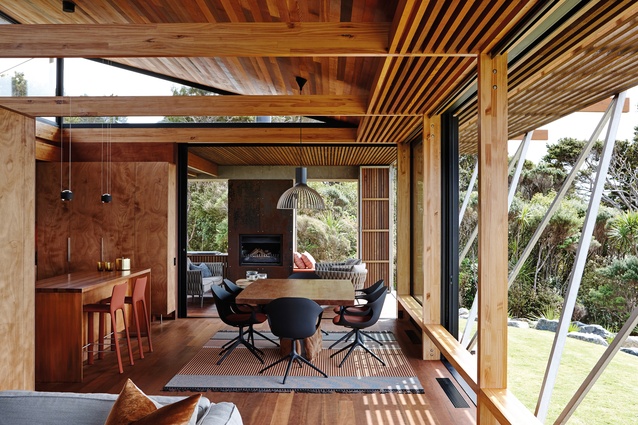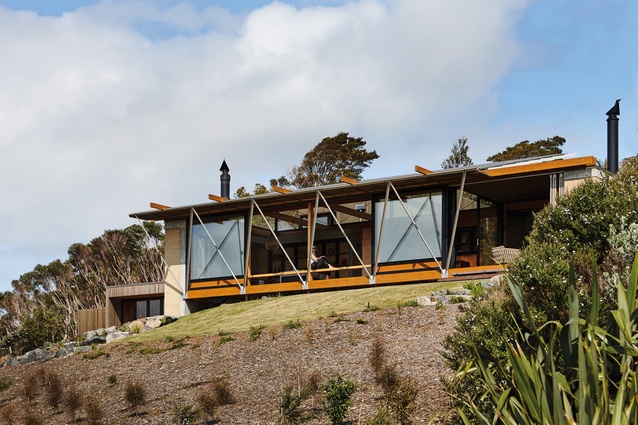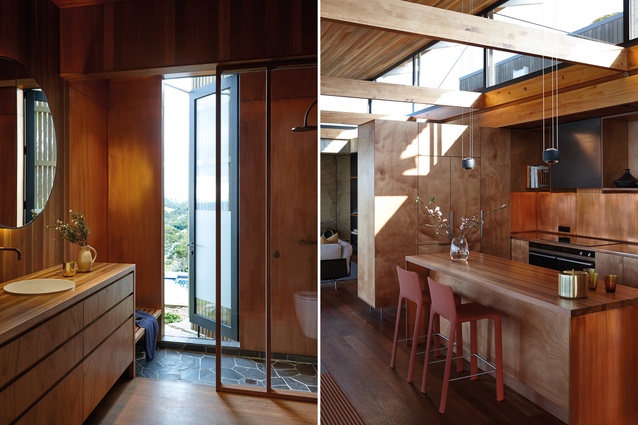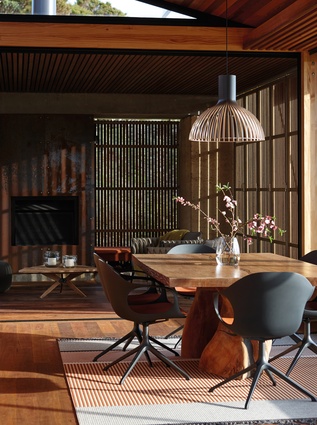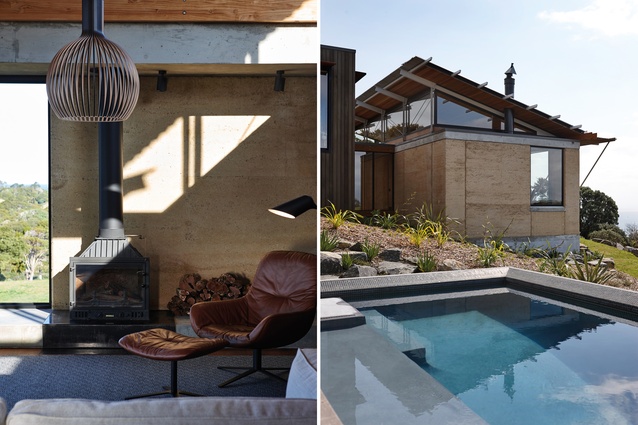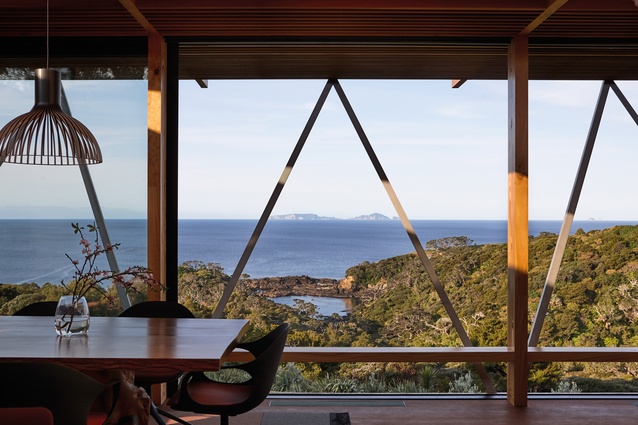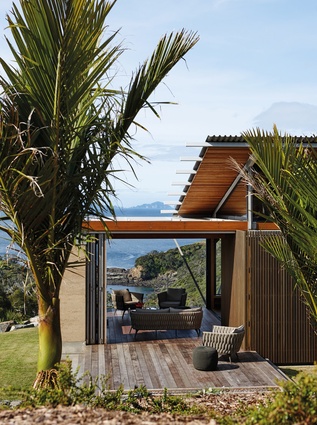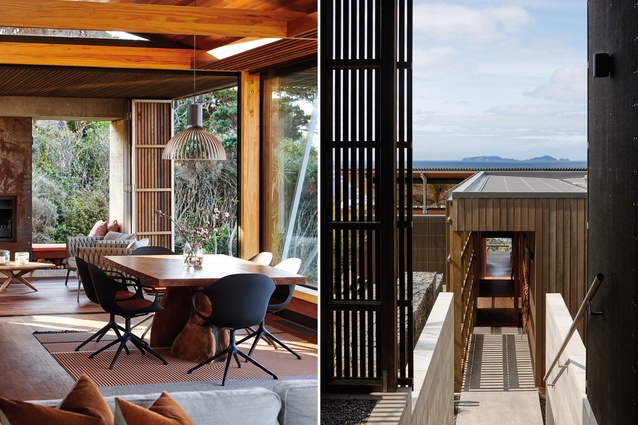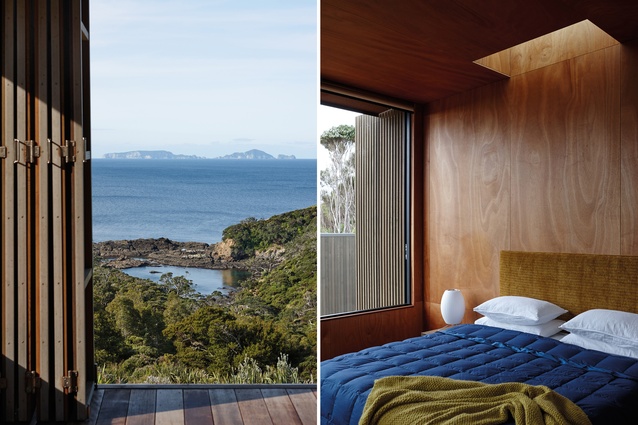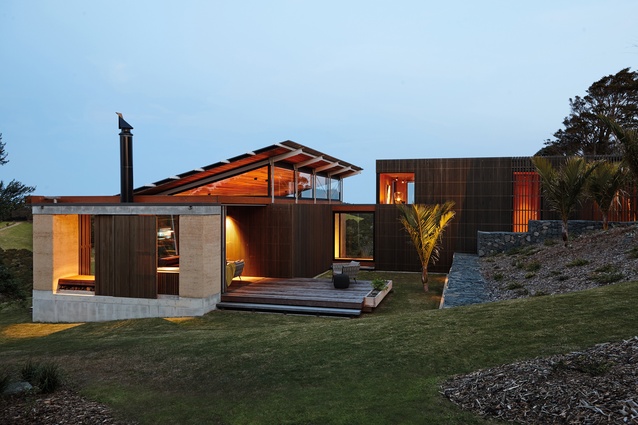Poised on the ridge line: Tutukaka home
The house was born from a simple yet idyllic brief: to recapture the relaxed feeling of endless holidays.
The first night the owners spent here, their grandchildren naturally insisted they come too. “We all slept in a bit of a muddle but the view of the dark, dark sky from our bedroom was incredible. It felt like the stars could fall onto the bed,” says one of the owners.
Focusing on the view, which stretches from the sloping section on a ridge line across to the Poor Knights Islands, was a priority for Lance and Nicky Herbst of Herbst Architects. The spinal staircase that leads from the parking deck to the main body of the home acts like a telephoto lens. “It’s trained perfectly onto a pool of blue water that swishes into a rocky outcrop from the sea,” says Nicky.
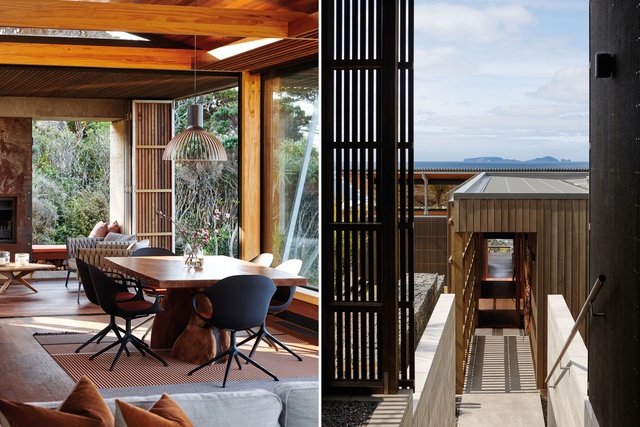
Lance calls this journey to the view a “classic sequence”. It begins with a carport that has an agrarian feel (where the owners’ beloved campervan has its berth), continues between two block walls that solidly channel the arrival, and on down along rain-screened walkways and across a glass-walled bridge that links to the heart of the home, set on a perpendicular plane.
The Herbsts see this room (with kitchen, dining and living) as a viewing platform. And, of course, their customary blurring of boundaries is here – all huge sliding windows that open one half to the elements and structural ledges, which become casual seats that float above the land.
“We like to feather the zone between inside and out,” says Nicky, “so we’ve included a battened eyebrow with stays to support it as cover overhead, which emphasises this architectural transition.” She likens the steel struts to branches of a pohutukawa.
“It’s the notion of looking through trees,” adds Lance. “By putting something man-made in the foreground of a huge natural panorama, you actually enhance the view – it relates back to the building.”
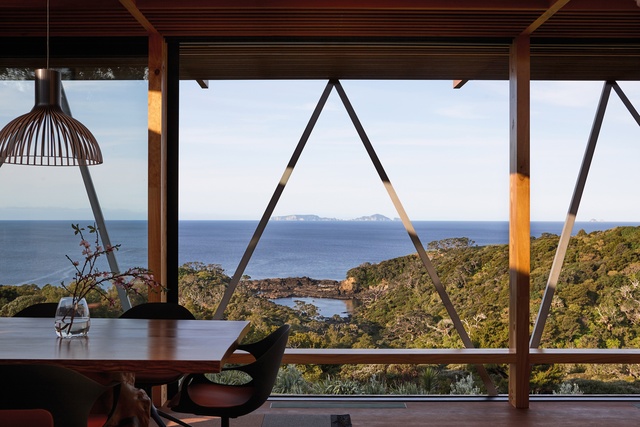
For their part, the owners had a different take. They saw the stays as guy ropes: reminders of many happy days spent in campgrounds on their extensive travels around New Zealand. The couple, who previously lived in a big house with big land, took the opportunity to downsize to a far-easier-care home and spend three months over winter in the benign heat of Queensland.
They bought in this subdivision where much of the surrounding bushland has been gifted to the QEII National Trust. “We were looking for a level site but instantly fell in love with the magic of this place.” When it came to designing the house, they knew the Herbsts were the people for the job. “I saw them on television once and remember thinking, ‘if ever I build, that is who I would go to’.”
The brief was simple: to recapture the relaxed feeling of endless holidays. And, a little more complex: to use natural materials, including rammed earth and metals – no tiles or grout. So asked; so delivered. Rammed-earth walls capped in concrete bookend the main living pavilion and there’s a copper splashback and black-steel facing on the rangehood as well as copper-wrapped shower cubicles.
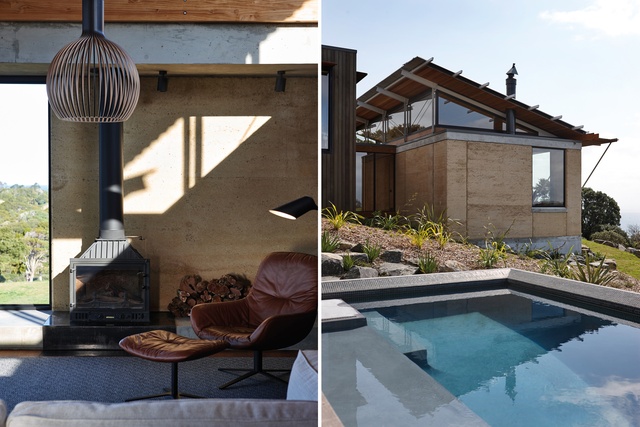
At the western end of the ‘viewing platform’, the architects have incorporated a ‘lanai’, the Hawaiian word for covered verandah. With shutters on three faces, it is a point of contact with the site. From here, the owners can access the western garden court or step out onto the seaside lawn. More metal: the black steel hearth on the Cheminées Philippe fireplace radiates heat for long autumn nights spent toasting marshmallows with the young-uns.
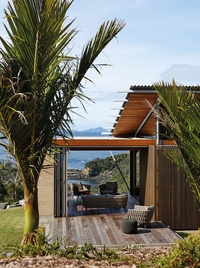
Beautiful Gaboon-ply wall panelling along the hallways and in the two bedrooms gives these spaces a cocooned, ship-like feel. In contrast, the living room has a real lightness of being. “With the lounge at one end and the lanai at the other, it’s perfectly designed for the way we like to live,” says one of the owners. “We can open it up in the summer time or sit snug round the fire in winter.”
A separate building (named, grandly, the pool pavilion) has a lap pool complete with a motorised swim current generator and gym equipment. “My husband loves it. He has his own space and I don’t have to wake up with a view of the bike and treadmill in the bedroom.”
It is only once she hears the splash of the morning swim session that she stirs, rising slowly to make breakfast and wondering where the kiwi that were calling in the middle of the night have slunk off to.
Perhaps they’d like to take up residence here? With spotted-gum flooring, ply cabinetry and cedar batten screens that wrap the form in timber, this is akin to a tree house, ripe for occupation of the feathered variety. The owners wouldn’t blame them. They feel very fortunate to have ended up here. “For me, the best part is that, wherever I am on the land, I look back at the house and see how poised it is in the surroundings. It’s beautifully balanced.”
This article first appeared in Urbis magazine.


